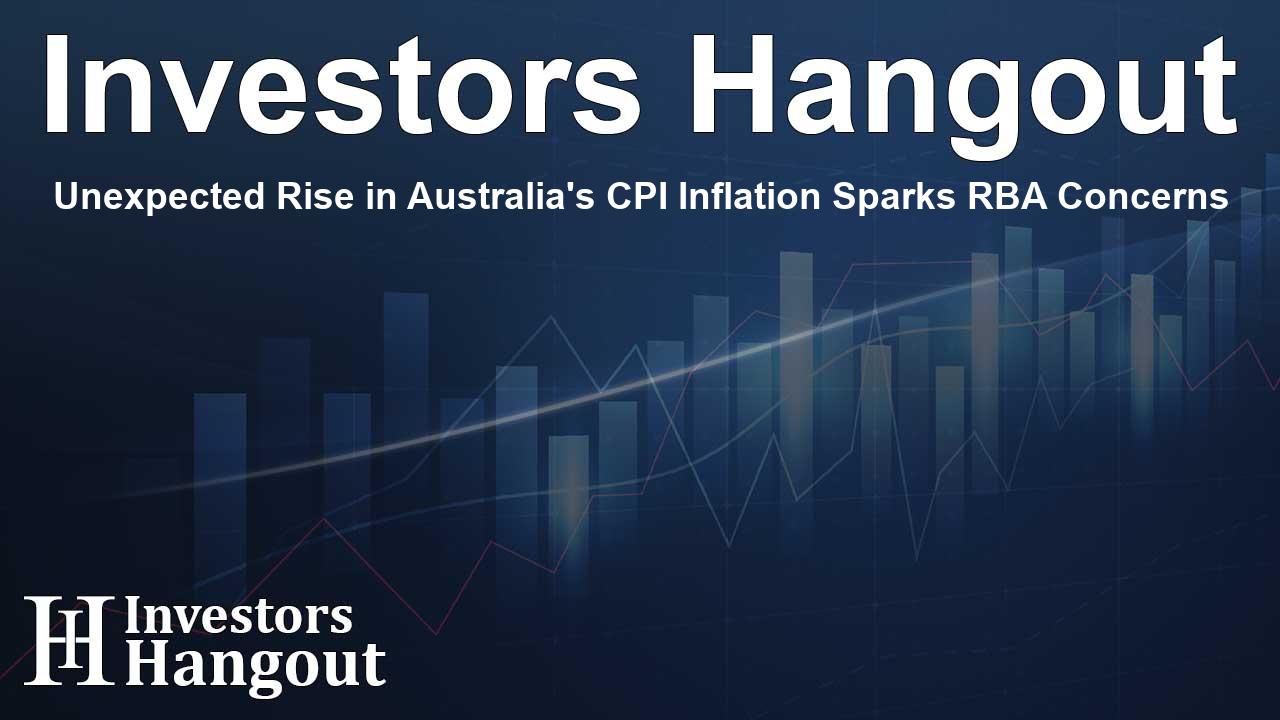Unexpected Rise in Australia's CPI Inflation Sparks RBA Concerns

Australia's CPI Inflation Surprises Economists
In a surprising turn, the consumer price index (CPI) inflation in Australia rose more than analysts had anticipated in November. This unexpected increase signals a potential shift in monetary policy, especially as core inflation metrics also remain elevated, suggesting that the Reserve Bank of Australia (RBA) may need to take a more hawkish stance on interest rates.
November CPI Inflation Data Revealed
Recent data released by the Australian Bureau of Statistics indicates that CPI inflation surged by 2.3% year-on-year in November. This figure not only outperformed the forecast of 2.2% but also marked an increase from the previous month's figure of 2.1%. Such results raise important questions about the trajectory of inflation in the coming months.
Core Inflation Trends
Excluding volatile items and seasonal factors like holiday travel, the CPI inflation climbed to 2.8% in November, up from 2.4% in October. This core figure is critical as it often provides a clearer picture of underlying inflation trends that can impact policy decisions.
Underlying Inflation Analysis
While underlying inflation, measured by the annual trimmed mean approach, decreased to 3.2% in November from 3.5% in October, it remains above the RBA's target of 2% to 3%. This continued elevation suggests persistent price pressures in the economy, despite some indications of easing.
Key Contributors to Inflation
Notably, the significant contributors to the inflation uptick were food and housing expenses. Additionally, the pace of decline in electricity prices was slower compared to previous months, as government rebates have started to influence price dynamics in the market.
Future Economic Implications
The persistent inflationary pressures have led many economists to forecast a potential recalibration of the RBA's interest rate strategy. Analysts widely expect the bank may delay rate cuts until 2025, as concerns about inflation's persistence overshadow the diminishing confidence in a quick return to targets.
Labor Market Aspects
Furthermore, strong performance in Australia's labor market diminishes the urgency for the RBA to implement rate cuts. The central bank currently anticipates that inflation will not consistently align with its target range until late 2026, maintaining a cautious approach to monetary policy.
RBA's Stance Compared to Global Peers
The Reserve Bank of Australia has adopted a notably cautious stance regarding interest rate adjustments, setting it apart from many other central banks worldwide that are responding more proactively to economic pressures. The lack of clear indications from the RBA on future rate cuts adds to the uncertainty in the financial markets.
Conclusion
As Australia navigates these complex economic landscapes marked by rising inflation and strong labor markets, the actions of the Reserve Bank of Australia will be pivotal in shaping the financial outlook. Stakeholders will closely monitor upcoming monetary policy decisions as they respond to these evolving conditions and the dynamic interplay between inflation and economic growth.
Frequently Asked Questions
What is CPI inflation?
CPI inflation measures the average change over time in the prices paid by consumers for a basket of goods and services, indicating the overall inflation level.
How did Australia's CPI inflation perform in November?
In November, Australia's CPI inflation rose by 2.3% year-on-year, exceeding forecasts of 2.2% and increasing from 2.1% in the prior month.
What factors contributed to the rise in inflation?
Main contributors to the inflation rise included food and housing costs, alongside slower declines in electricity prices due to government interventions.
When does the RBA expect inflation to hit its target?
The RBA anticipates that inflation will sustainably return to its target range by late 2026.
How does Australia's monetary policy compare globally?
The RBA's approach has been relatively cautious compared to other central banks, which have often moved more quickly in response to economic pressures.
About The Author
Contact Lucas Young privately here. Or send an email with ATTN: Lucas Young as the subject to contact@investorshangout.com.
About Investors Hangout
Investors Hangout is a leading online stock forum for financial discussion and learning, offering a wide range of free tools and resources. It draws in traders of all levels, who exchange market knowledge, investigate trading tactics, and keep an eye on industry developments in real time. Featuring financial articles, stock message boards, quotes, charts, company profiles, and live news updates. Through cooperative learning and a wealth of informational resources, it helps users from novices creating their first portfolios to experts honing their techniques. Join Investors Hangout today: https://investorshangout.com/
The content of this article is based on factual, publicly available information and does not represent legal, financial, or investment advice. Investors Hangout does not offer financial advice, and the author is not a licensed financial advisor. Consult a qualified advisor before making any financial or investment decisions based on this article. This article should not be considered advice to purchase, sell, or hold any securities or other investments. If any of the material provided here is inaccurate, please contact us for corrections.
